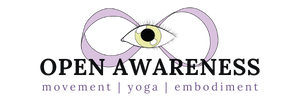13 Jun Integration, Einstein, and Fascia
First, a story
A couple Fridays ago I was talking to a friend and fellow yoga teacher about integration. You know, bringing the pieces together, making them talk. Finding the connection points. As our conversation unfolded, I recognized something in myself. I had been keeping my various studies and practices almost separate, in an attempt to understand each of them “purely.” Compartmentalized. I think I did it out of an attempt at respect. Respecting the traditions means I won’t mix the traditions. Or something like that.
The following week I was chatting with a student after class, who was telling me about how he notices these different roles he plays. The work him. The hanging out him. The family him. These compartmentalized versions of himself. The truth is, they’re all one person. That’s one thing about yoga, it’s where you can bring those pieces together, get them relating, recognize the one you that exists in each of those compartments.
A very random notebook
A few days later, I picked up an old notebook my sister-in-law had given me around 2016. When I first got it, I decided it was going to be a Tarot notebook, so I went through it and every few pages labeled a different Tarot card. I had filled out some pages, but there was a lot of blank space in between, a lot of empty pages to flip past before getting to a page full of notes on a particular card.
Three years later, in 2019, I reached for the same notebook to take notes on a Yoga Therapy conference I attended. Since the Tarot notes were spaced out and incomplete, separated by blank pages, I just filled in the blanks, skipping over pages with notes about the Three of Cups or Temperance or whatever card it happened to be. In 2020 I started taking Psychology classes at Santa Monica College and used the same notebook until it ran out of blank pages.
All this to say, my notes in that notebook look like this: Positive Psychology, notes on a Tarot card, New Research on Fascia, Pain Science, Tarot card, Psychology 1 (Tarot interspersed), Neuropsychology (Tarot interspersed). It cracks me up to read through hard anatomy notes, then mystical notes on Tarot cards, then research methodology, then mystical, then psychopharmacology, then mystical, and so on.
All the while, I’m keeping my various studies and practices separate. Somehow sandwiched together in one notebook, but never the twain shall meet.
It comes together, thanks to Einstein
Until this weekend while reading the notebook, when I came across a note I took from my first SMC Psych professor. She was teaching about the history of psychological science and made the point that everything changed when Einstein’s Theory of Relativity was completed in the 1970s. Before that, science was looking for individual truths. After that, science was looking more at context, relationships. That is, there is no longer a debate: nature or nurture. It’s both: nature and nurture.
Relationships. Context. Integration.
Why was I keeping my studies compartmentalized?
Isn’t the point to integrate knowledge? And apply it?
Thanks Einstein. And Dr. Davis-King.
It’s held together with fascia
Of all the notes I read past, it’s the fascia bit of my studies that’s tangled up my attention lately. Fascia is both physiologically and symbolically interesting. It’s so apropos.
Fascia is a type of connective tissue that’s part of a body wide system of force transfer, structural support, somatic sense, and autonomic regulation. It weaves around and within every little bit of you. It’s the fluid between each and every one of your cells and the collagen structure that forms the shape of you, in skin, bones, organs, blood, nerves, body and brain.
It’s anatomically the part of you that integrates your pieces into a cohesive whole, and facilitates your pieces’ communication within yourself and with the outside world.
How much do you have to contract your bicep muscle to hold the weight of the grocery bag? Your fascia sends those signals so your brain can tell your muscle to fire. Feeling hungry? How do you know? Fascia collects and sends those signals from your body to your brain.
Your fascia is the net that weaves you together and the network of phone lines that gets the pieces of you talking to each other.
No wonder my contemplation of integration landed on a look-see/feel-see of fascia. As for the “feel” part…
Practices for fascia
Yin Yoga is focused on connective tissues to increase glide within the fascial system, which creates more body-wide communication and local range of motion. Somatics works with it, too. I’ve also recently been practicing something called the Melt Method, which is all about connective tissue and looks like foam rolling but is different. I actually stumbled on a cheap Melt roller before all this contemplation began and got into it by chance, so maybe there’s something mystical about the Universe sending signs after all. (See last week’s blog.)
Really, every kind of movement and simply sitting all day in your chair works with fascia. Fascia shapes around your habits. It can get stuck, and its dysfunction is related to chronic pain, IBS, anxiety and depression, auto-immune disorders, and possibly more. More research is getting published on fascia every day and it’s….fascia-nating.
There’s a lot yet to be discovered, but much that’s better understood now than before, when fascia was considered to be an inert substance in the body, cut away in order to get a better look at the organs and muscles which it contains. Context, people. It’s important!
